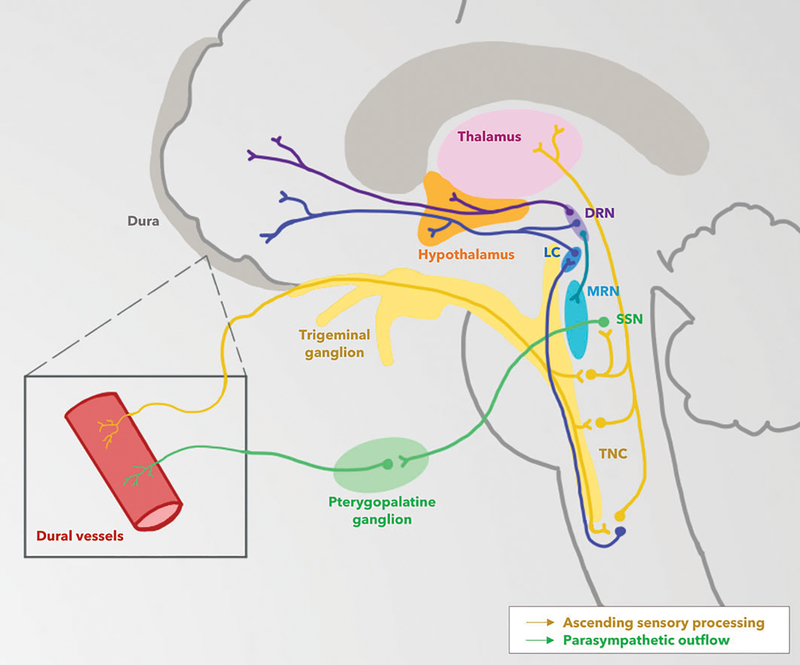Figure 2.
The trigeminovascular system in migraine. The dysfunctions of several brainstem pathways have been implicated in the pathogenesis of migraine. Trigeminovascular input from meningeal vessels passes through the ophthalmic branch of the trigeminal nerve and trigeminal ganglion before synapsing at the trigeminal nucleus caudalis (TNC). These neurons decussate in the brainstem and synapse at the thalamus. Brain imaging studies have revealed nociceptive modulatory activity involving the magnus raphe nucleus (MRN), locus ceruleus (LC) and dorsal raphe nucleus (DRN). A reflex neural connection from the pons, originating at the superior salivatory nucleus (SSN), is responsible for cranial parasympathetic output to dural vessels, as mediated by the pterygopalatine, or sphenopalatine, ganglion; this trigemino-autonomic pathway may play a role in migraine. Genetic, environmental, dietary and metabolic factors in migraine are thought to ultimately incite pathologic activation of areas of the hypothalamus, limbic system and cortex. Illustration by Divy Mehra.

